5 Superheroic Things About inFamous: Second Son (and 5 Super-Failures)
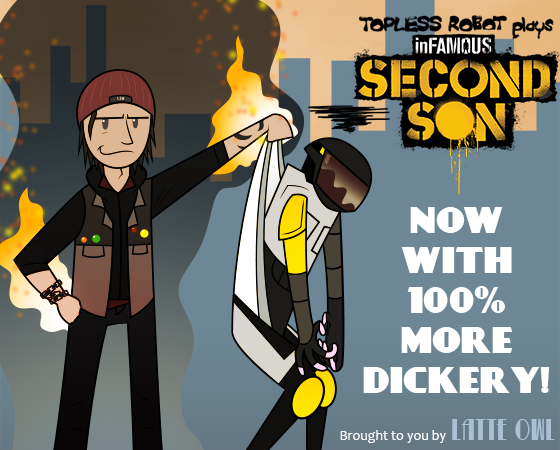 |
| Art by CitrusKing46 |
Seven years have passed since the events of inFamous 2. Some of the Conduits (read: Superpowered folks) still remain, and with the public in a panic over these potential threats, the Department of Unified Protection (D.U.P.) is sent to round them up. When three Conduits escape close to Seattle, rebel Native American Delsin Rowe comes into contact with one and discovers that he’s a Conduit himself, who can absorb the powers of others. Unfortunately, D.U.P. director Brooke Augustine then pops by looking for the escapees, and ends up torturing Delsin’s tribe for any information on them, leaving them in a condition only her powers can cure. Determined to copy Augustine’s powers and save his tribe, Delsin heads out to Seattle to find the D.U.P. settled in, and proceeds to get what he needs from them any way possible…
Three years have also passed since inFamous 2 itself, and along with a whole new generation of Conduits comes a chance for one of the PlayStation’s biggest successes of the previous generation to shine again in a virtual superhero epic. So does it end up capturing the glory of, say, a George P?rez comic, or is it more akin to a comic that needs to be burnt atop some sort of imaginary wall? Let us find out…
Second Son’s Five Super-Failures
5. Gratuitous Touchpad Bits
 |
With every new videogame generation comes new technologies, and with those new technologies comes that awkward period where we try to figure out exactly how to properly use them. This brings us to the PS4 controller’s touchpad, presumably added simply because tablets are a thing now and Sony wanted something at least similar to them. But what to actually do with it in a game? Well, in Second Son you press the touchpad to refuel your powers at nearby sources, swipe it to open prison doors, hold on to it to help destroy Mobile Command power cores, etc. But whenever something like this popped up, I had the same reaction I did with about 80% of all Wii games that threw in motion controls, that being “What do fancy controls accomplish here that any ordinary push of a button couldn’t?”
Now, in no way did I ever find these features to ever be a hindrance or an annoyance, just puzzling. They pretty much just exist solely as gimmicks designed to sell a “next generation” game instead of just, you know, letting the rest of the game speak for itself. Much like the average special addition to a Pizza Hut menu these days, it’s basically throwing a cheesy but harmless new addition onto an otherwise fine produ…okay, maybe that wasn’t the best metaphor. It’s just kind of a pointless addition, is all.
(And yes, I’m aware I kind of forced that screenshot in. But can you blame me? There are at least ten Sly Cooper Easter Eggs in this game; how could I not resist?)
4. The Climbing Is a Bit Wonky
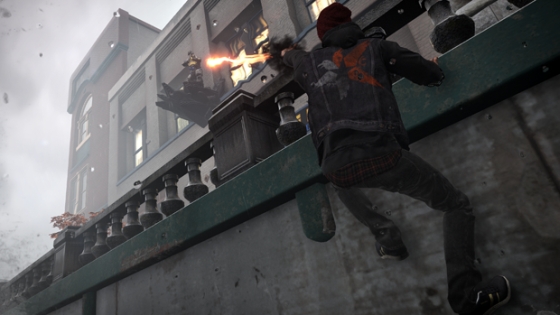 |
As you quickly learn early on in the game, Delsin has some notable skills in the art of climbing and parkour. And while this allows you to climb up virtually any structure or building in the game, it doesn’t always go off quite as smoothly. More than a few times, Delsin will find himself having trouble grasping on to a ledge that appears to be climbable, taking a few tries to hoist himself upon it. Other times, you might find yourself trying to jump onto a platform and end up pulling off a balancing act on a nearby beam or rail. And then when you get your powers later on, you might think being able to zoom up the side of a structure makes things easier…except for when you need to travel up a more narrow structure and find yourself flying off of the side.
I remember these kinds of bits being a slight problem the first game as well, and it definitely got annoying at times there. Again, this really isn’t a gamebreaker, not in the slightest…it just kind of makes me sad that it’s been nearly five years and Sucker Punch still hasn’t fully mastered the art of climbing in that time. Next time, can we just invest in a grappling hook?
3. The Ham-Fisted Bits of Social Commentary
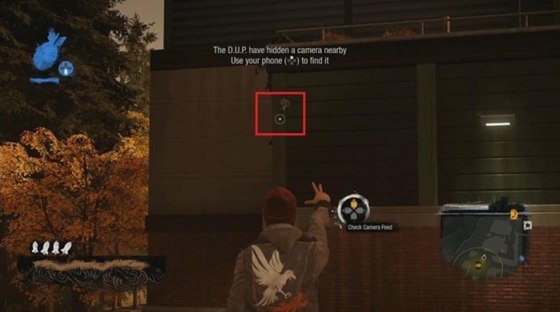 |
Compared to the previous games’ more traditional comic book feel, Second Son supposedly contains a more realistic world, plot, and overall tone (well, as realistic as one can get with a game where you can run around at super speed and leave Tron-style neon trails). And with the real-world setting comes the obvious allusions to real-world issues and problems. And oh, does the game love to shoehorn these in at times. Shall we run down the checklist of said issues the game’s story tries to tackle?
– The war on terror and how hypocritical and unethical actions such as torture are used at times during it? Check!
– The NSA/sacrifice of freedom to remain secure in a post-9/11 world? Check!
– Speaking of which, the allusion to the events of previous games as a 9/11 parallel? Check!
– Something something the use of drones? Why not? Check!
– Bullying, drug use and various other subjects taken out of the after-school special lineup? Check!
– The use of Conduits and their persecution as a metaphor for the struggles of homosexuals or any other civil rights movement? Check, right down to the point where they pretty much quote several bits seemingly taken from various X-Men stories. In fact, you can pretty much cut and paste a good chunk of X-Men and the social commentaries that go with them, right down to the final boss blatantly being an X-Men villain expy.
Again, a lot of this never really harms the game much, but it does end up slathering the story in a thick coat of Velveeta at times. It comes off as trying too hard, attempting to come off as deep, thought-provoking and super-super-cereal in a game where you can sprout virtual wings just so you can glide to an area where you can spray paint a kitten on a wall before you nail a guy who’s throwing fireballs at you by wrapping him in glowing neon chains. It’s just obviously wedged in a game that otherwise tries to be more light-hearted, creating an awkward contrast. Speaking of which…
2. The Weak Morality System
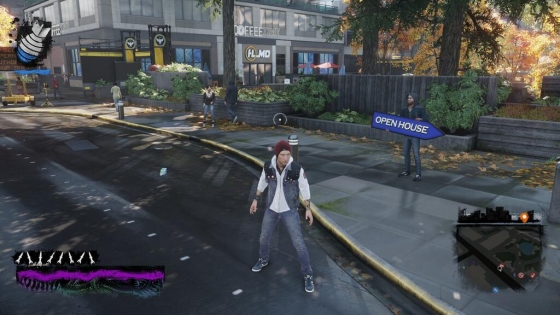 |
| Pictured: Seattle’s scum of the earth, apparently. |
Relating back to Daniel’s list on Telltale’s The Walking Dead last week, in the most recent episode of that, one of the most difficult decisions the player has to make is choosing what table to sit at for dinner. I know that sounds like a joke, but it is indeed a legitimate, difficult, gut-wrenching choice that you have to make with only seconds to make your decision. I can’t explain why this is the case due to spoilers, but trust me, it’s a simple yet affecting scene.
My point is that with a good morality system in play, a skilled developer can make even something as seemingly insignificant as where to sit down into something much more; a true challenge for the player that makes them ponder what they think the right answer is, or if there even is a right answer.
As you may have keenly observed by the fact that we’re still counting down the negative aspects of the game, Second Son does not have that good of a morality system. Despite one of the series’ big selling points being the ability to choose either a “good karma” path or an “evil karma” path that affects your powers, the series hasn’t been particularly well known for presenting the choices that affect your karma that well, and Second Son continues this tradition.
A good morality system in a video game should present equally valid choices that each make good points in one way or another: a gray-and-gray system as opposed to black-and-white. And while Second Son tries to present its choices like that, it doesn’t really succeed. Basically, it simply boils down to letting everyone live and go free = good, killing them or anything that would harm them = bad. Not exactly complex, to say the least.
Outside of story-based choices, the ways you gain karma are silly as well. Good karma is gained through healing injured people, freeing unjustly imprisoned suspects, and busting drug deals, but evil karma? Again, you basically just kill civilians. But the specific civilians they highlight include anti-Conduit protestors, bullies, and…street musicians and sign twirlers? The hell?? Why does the game suddenly want me to kill these seemingly random yet specific people? What’s my motivation for doing so? Better yet, what’s Delsin’s motivation for doing so? Did a man wearing a sandwich board kill his parents or something?
But I could easily put up with all of the above when it comes to a morality system if it weren’t for the fact that the game straight up tells you what the good and bad choices are. Not only does the game color-code your choices as red or blue, but during story bits it just flat-out tells you which choices lead to being a hero or not. And that makes it worse, because much like Dishonored’s equally half-assed moral choices, it means I no longer find myself making the choices I think are right and what I want to do, but rather find myself doing whatever gets me the good or bad ending. In a genre known for giving players insane amounts of freedom, chaining them to a dual-choice system results in some counter-intuitive parts that end up being a bit of a buzzkill. I’d say it’s like Delsin has a cartoon angel and devil on his shoulders the whole time…except that summoning angels and devils depending on the path you take is an actual power you can get. Subtle, guys. Real subtle.
1. The Car Boost
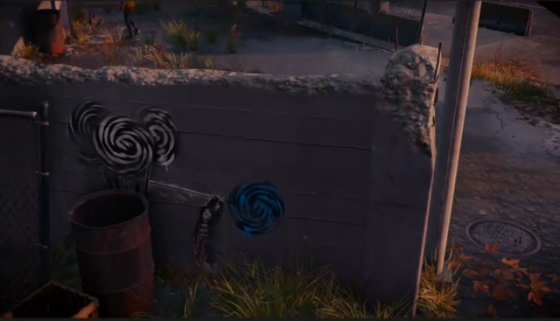 |
| I couldn’t find a picture of the Car Boost, possibly due to it being too lame. So here’s some in-game lollipop graffiti instead! Yay! |
So early on in the game before you even reach Seattle, Delsin winds up gaining the Car Boost, a power that allows him to stand on top of a car and launch himself into the air. This power is basically used to cross a wrecked bridge leading into the city (which has individual wrecked portions divided up that conveniently each contain at least one car on them. Imagine that), after which it becomes completely obsolete the second you reach Seattle and immediately begin gaining more powers.
Now, my beef with this isn’t that it’s a completely useless power thrown in to essentially pad out a training exercise. No, rather my beef i that the mere existence of this power baffles the f*** out of me. I mean, when they were throwing around idea for super powers that players would love to have, who said “Hey, you know what would be great? Having the power to jump about twelve feet into the air, but only when you’re standing on top of a car!” I mean, who would want to have that power? Why is it so specific, like being able to shoot fireballs from your hands, but only if you’re eating radishes at the time?
Did any other Conduits have this power? Was it the only power they had or knew about? Were they one of those Legion of Superheroes rejects like Color Kid or Arm Fall Off Boy? Did he have a superhero name? A costume? This power is just so damn silly, but like I said, its mere existence keeps me wondering how the hell it fits in! It is maddening!! Arrrggghh!!
Second Son’s Five Heroic Feats
5. The Alternate Reality Game Is a Nice Touch
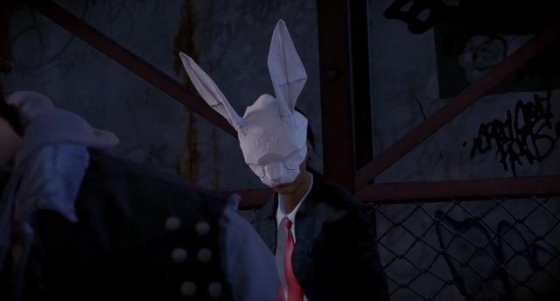 |
The first thing you might notice upon opening the box for Second Son (unless you purchased a digital copy of it) is an ad for a series of free missions known as “The Paper Trail,” a story revolving around a manga-loving Conduit with paper-themed powers who just happens to be serial killer. How it works is that you head to the Paper Trail website, register, then head to the in-game Paper Trail mission. Solve it, investigate a crime scene, drop the evidence off in a mailbox, and then you continue the story from your computer/laptop/tablet/etc., finding new leads by researching the clues given and solving puzzles in a more traditional adventure game-style format. Then when you’re done, the in-game mission/web-based mission cycle continues.
It might seem a tad odd, but it is pretty fun indeed, an innovative and welcome little change of pace that allows you to give your crime-solving skills a mental test as well. Plus, with six planned updates/sixteen or so missions planned to be added over two months, it definitely comes off as a nice free chunk of DLC that builds on the game’s universe and story a bit more (you know, like proper DLC should do). It’s a great idea for an extra that’ll keep you playing even after the game is beaten, and hopefully future games will take a lesson from this (preferably in the “free” part as well).
4. The Game Brings Seattle to Life
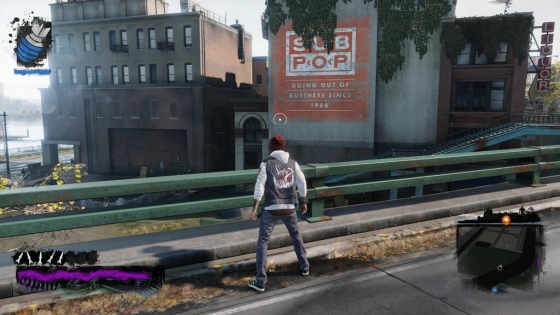 |
…So yeah, it kind of goes without saying that a next-gen game has some rather fancy graphics. But rather then go into the technical details that make it all great, I’ll point out that the world those graphics are used to create is quite a stunning one. Unlike the previous games and their New York/New Orleans substitutes, Sucker Punch decided to put their Washington-based skills to good use and craft a superb replica of the Emerald City, right down to actually rendering real-life Seattle residents to use as the NPCs. And while zooming around the city, you might notice such monuments as the Pacific Science Center, nods to famous Seattle record labels such as Sub Pop and Sonic Boom, and countless coffee shops and chains (including new TR favorite Latte Owl) peppered around the city in astonishing detail. It really does a lot to capture the essence of the city and its culture, especially one known for its art and entertainment that perfectly matches the game’s tone. And yes, you get to visit the Space Needle at one point. Well, you do more than visit it, but that would be spoiling things…
And speaking of the arts in Seattle, I couldn’t help but notice that they tend to pop up as a recurring theme throughout the game. Delsin is presented as a Banksy-style street artist, one Conduit uses neon and lasers to craft elaborate drawings and memorials, another has Green Lantern-ish powers that allow him to bring video games tools to life via imagination. You have a serial killer who leaves little manga books at the scene of a crime, and even Delsin’s brother suggests that the sinister stone structures the D.U.P. rigs up to house their troops could be a form of tagging. It all creates room for a a lot of creative visuals and setpieces, and the fact that it syncs up so perfectly with the city everything takes place in is the cherry on top. Or a Cherry Blossom Latte, if you prefer.
3. Delsin Is a Great Character
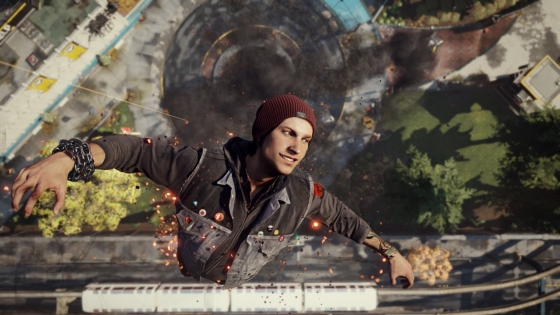 |
Second Son can boast that Delsin Rowe is the first Native American protagonist in a major game since 2006’s Prey (Connor from Assassin’s Creed III doesn’t count due to him being only half Native American and half block of wood), but more importantly, the game can boast that it has a really damn good protagonist, period. One of the game’s big taglines is “Enjoy Your Powers” and Delsin proceeds to happily make that his motto throughout the course of the game, approaching every new core relay containing a new power for him to absorb with the same kind of glee as a kid about to open a huge Christmas present containing that Nerf gun of mass destruction he’s been eagerly anticipating.
Delsin, you see, is a more optimistic hero, viewing his powers more as a blessing compared to others. He approaches nearly every bout you encounter with a grin and a wise-crack, Spider-Man-style, ready to test out his new skills. Fittingly for a type of young street artist such as him, he has a cocky, rebellious attitude, seemingly in that phase we’ve all been through in high school or college where you just want to damn the man even though you have no real idea why the man needs to be damned or why you sudden feel you need to be damning people. But you never really feel annoyed by Delsin’s attitude, probably because he’s finally in a position where he can put his anti-authority streak to good use.
He goes from a sort of rebel without a cause (like in that famous movie, Ferris Bueller’s Day Off) to one with with a newfound purpose over the course of the game. See, in another Spider-Man allusion, Delsin basically goes through a “with great power comes great responsibility” arc, gaining his powers by sheer chance and then having to figure out how to properly use them, even leading to more than a few serious bits he pulls off quite nicely. He’s just quite the lovable little scamp, be it rescuing a troubled citizen in need or screwing with the woman on the D.U.P. hotline just to let her know he’s defaced one of their billboards, ready to face the D.U.P. in a showdown. Truly a great character.
…He really could’ve worn a better hat, though. Just sayin’.
2. The Powers You Gain Are Damn Fun
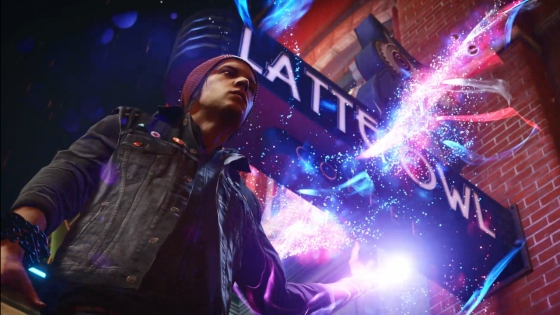 |
So remember that “Enjoy Your Powers” line that was just mentioned earlier? Shockingly enough, it turns out the developers want you to enjoy them as much as Delsin. And by jove, are they some enjoyable powers indeed! Compared to the more elemental-themed electricity/fire/ice set of previous games, Second Son makes more use of its urban environments and offers up the powers of smoke, neon, and video (games). Each one has its own set of moves suited for a different play style; Smoke consists of more straightforward attacks and allows you to dash around in little teleports, neon is based more on speed and precision long-range attacks and has you run around at super-speed, and video puts more focus on melee with a touch of stealth via invisibility. So what’s your preference? Shooting an enemy’s shins with lasers in order to peacefully subdue them? Mowing troops down with a chaingun-like barrage of pixels? Or maybe you just prefer to teleport high into the air and deliver your Karma Bomb special attack, landing on the ground like a meteor and causing a massive explosion of ash? Good times to be had all around!
And that’s just combat, mind you. Each power provides you with their own means of getting around as well, be it air dashes or just being able to run straight up the walls. Needless to say, such unique modes of transportation are always a gem in a sandbox game, the kind of gem that allows you to purchase the happiness of being able to dash from one building to another, where you land greet the D.U.P. agent there with a flaming chain to the face. Really, I don’t have much else to say about the powers here. It’s a versatile crop of skills that allows for a lot of variety in gameplay, and all of them are just sheer fun!…Okay, except for the Car Boost. Seriously, what is the mysterious force that allowed a man to create such huge leaps, but only from cars?? We may never know…
1. It Really Does Capture the Feeling of Being a Superhero
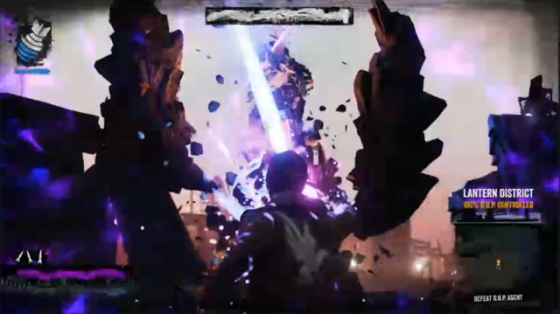 |
Mind you, this is a bit based on playing through the good karma path (again, no real motivation for evil karma), but the end Second Son really gets the superhero experience down pat. As you progress through the game and begin rescuing citizens, freeing trapped people, and busting D.U.P. agents, you begin to notice that the city actually begins to react to your presence. Citizens actually cheer you on, take your picture, talk about your feats, and generally just look upon you with sheer amazement (the loading screens even allude to Delsin quickly gaining an all-female fan club, in fact!).
But while I made a bit of a Spider-Man comparison earlier when it came to Delsin, the general effect he has on the city is more akin to Batman or Superman, in that he acts more like a symbol. His protests of anti-D.U.P. graffiti, destruction of invasive security cameras, and actions that show the postives of Conduits end up inspiring people, making them question the people supposedly protecting them, culminating in a scene towards the end that I won’t spoil, but made me ultimately feel proud about deciding to help these people.
And again, nothing compares to the thrill of using your powers to zip between buildings from rooftop to rooftop, surveying the city for additional challenges to take on, and zipping down to thwart a sudden crime in progress that suddenly came up. Much like Titanfall last time, it’s just all of the little things that add up into one superior whole, just with an emphasis on the “super” this time around. And with this game having triggered memories of Superman, Batman, Spider-Man, and the X-Men (them not so much in a positive way, but still), Second Son really does showcase its range as an epic superhero adventure, creating an experience not to be missed out on.
So yeah, in the end, inFamous: Second Son is a terrific game that I easily recommend, either for fans of the previous games or just as a great standalone game anyone can enjoy. If you have a PS4, scoop it up immediately, and enjoy your powers indeed. And may the spirit of Latte Owl be with you throughout it all (seriously, it will save your life one way or another…).
Special Thanks to Gallen_Dugall, RegularStormy, Timely-Tardis-Lego, and Dr.Gonzo82 for joining me as I streamed the game (but sadly couldn’t record it) and supporting me, and bonus points to Gonzo for taking some screenshots…and Gallen for coming up with the Latte Owl theme song. Any other games you’d like to see us review, upcoming or relatively recent? Let us know in the comments!
Previously by Kyle LeClair:
4 Ways Titanfall Transcends Its Terrible Story (and 3 It Doesn’t)
5 Things That Make South Park: The Stick of Truth Awesome (and 2 That Make It Lame)
6 Great Things About Dead Rising 3 (and Two Notable Flaws)
The Six Greatest Virtues and Two Worst Sins of Saints Row IV

